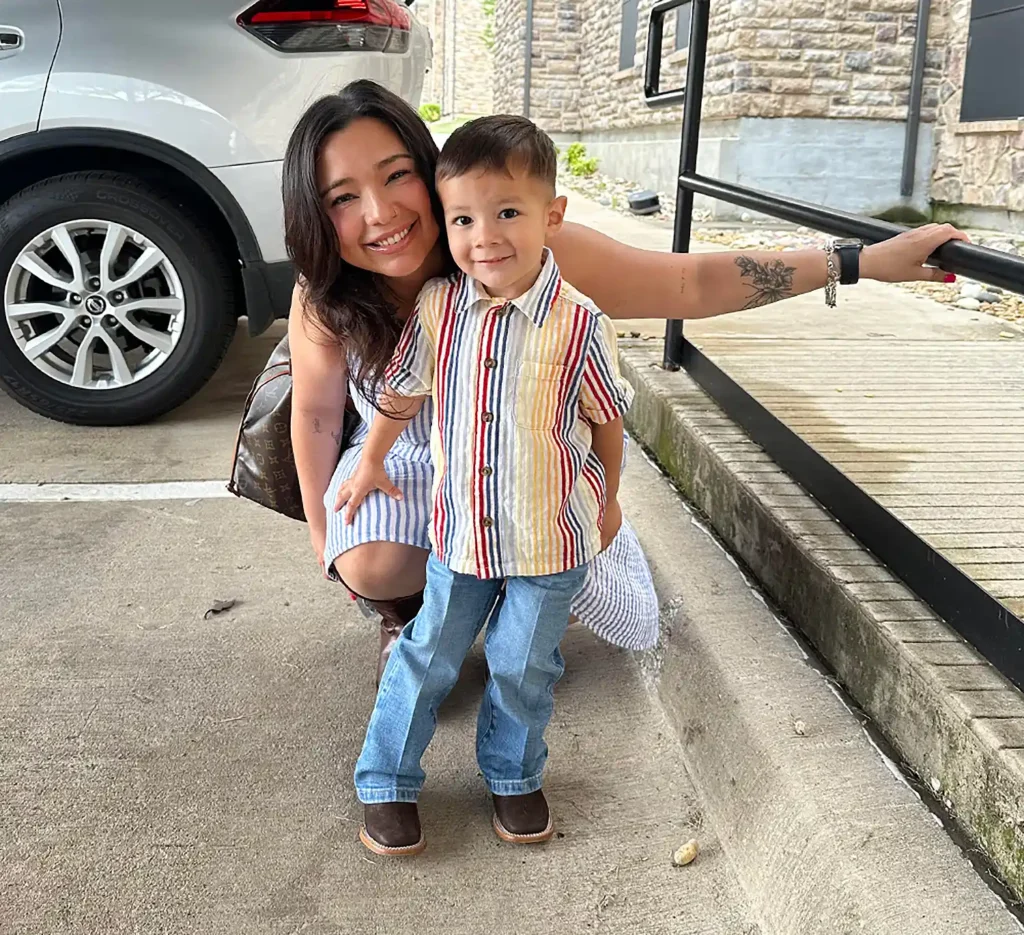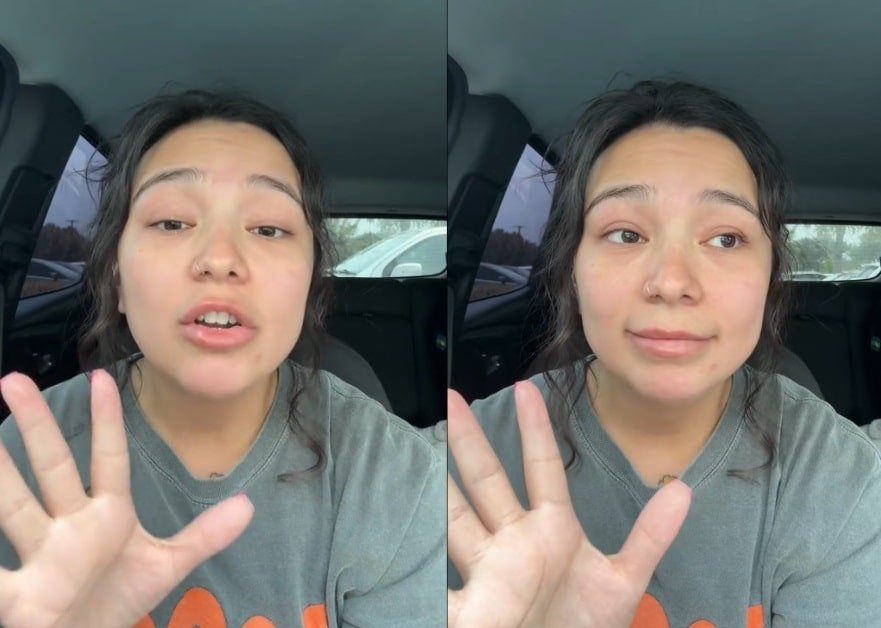Breanna T. was in the middle of a routine shift in the emergency room when everything she knew — and could see — changed in a flash.
One minute, she was helping patients as usual. The next, her world went completely blurry.
The 30 years old ER nurse had just stepped out of a patient’s room when her vision suddenly vanished — in both eyes. No warning, no gradual blur. Just… gone. Her training kicked in immediately, but inside, she was spiraling. Still, she kept her cool.
“I cleaned my glasses, I took my blood pressure, I took my blood sugar,” she said. “I was just trying to go through everything I could think of to fix it.” All the while, she was still trying to care for her patients. “I was doing my best to keep my composure.”
At first, she didn’t even tell her coworkers. She wanted to rule out anything obvious before sounding the alarm. But as the minutes ticked by and her vision didn’t return, she finally told her team what was happening.
“Here’s the situation,” she remembers saying, “do you guys have any ideas? Because I’ve already done everything I can think of.”
Together, she and a few doctors began brainstorming — but nothing made sense. As a nurse, she knew vision loss was a classic sign of a stroke. But this wasn’t acting like one.
“It was both eyes at the same time, and I had no other symptoms,” she explained. “I tried to stay levelheaded.”
She wasn’t dizzy. She wasn’t nauseous. No headache, no slurred speech. Just the vision — and the fear.
“This didn’t look like the heart attacks, strokes or brain bleeds I’ve seen before,” she said.
Eventually, after ruling out life-threatening issues, the ER team advised her to follow up outpatient. Breanna understood, professionally. But personally, it was terrifying. “It wasn’t life-threatening,” she said, “but it was still scary not knowing what was going to happen next.”
After work, she tried to get in to see an optometrist — but hit a wall. “They’d say, ‘We don’t have openings,’ before I could even tell them I was having an emergent vision change,” she said. “I felt stuck between a rock and a hard place.”
She couldn’t see. Emergency services had done what they could. And now? She was left in limbo.
Her boyfriend started calling around on her behalf. Still nothing. “It was just really frustrating,” she said. “I felt like I was being stopped before I could even explain why I needed help.”
For five days, Breanna lived with severely impaired vision. She tried special contact lenses — but they triggered headaches worse than the vision loss itself. “So I was only wearing them when I absolutely had to.”
Then finally, she got an appointment. She went alone, still unsure what this mystery condition even was.
The optometrist stayed calm, but something about his questions felt off. Then came the news: her eye scans weren’t normal. Her eye pressure was way too high. There was visible swelling.
The diagnosis? Acute angle-closure glaucoma — a rare and fast-moving condition that can come out of nowhere. The optometrist told her she needed to see a specialist immediately or head straight to a hospital with an ophthalmologist on call.
“It was 4:30 p.m. on a Friday,” Breanna said. “I was scared I’d have to go back to the ER and start all over again.”
Her mom and partner rushed to be by her side. But Breanna had taken in the scary news alone. And in that moment, her thoughts turned to her toddler.
“I’m a mom,” she said. “All I could think was, ‘Am I going to be able to see my son grow up?’”

While this form of glaucoma usually takes years to progress, Breanna’s case unraveled within hours. Fortunately, doctors were hopeful it could be reversed.
And oddly enough, the solution came from stopping something.
“I wasn’t ready to stop my medication,” she said, referring to an antidepressant she had been taking, “but that’s what ended up solving it.” As the drug left her system, her vision slowly returned. Her care team believes the medication likely triggered the event due to a preexisting condition she never knew she had.
“The half-life of the medication lined up with when my vision came back,” she said. “They’re almost 99% sure it was that.”
She hadn’t even heard of acute angle-closure glaucoma before this happened. Most of her ER experience with glaucoma was long-term cases — people dealing with floaters, blind spots, and gradual vision loss. This was something else entirely.
“They thought maybe it was Ebola, or Lyme, or measles,” she said. “I said no, and I still stand by no. But contact tracing takes weeks, so it’s something we may have to revisit.”
In the end, her medical team found something else too: Breanna has an enlarged optic nerve on her left side — a structural trait that could make her more vulnerable to developing glaucoma down the road.
So now, she’ll have yearly checkups to stay ahead of it.
“It was an incidental finding, but a good one,” she said. “Even though my symptoms have resolved, I’m still at risk for developing another type of glaucoma later on.”
When she finally returned to work, it was emotional. “I was just grateful to still be able to do my job,” she said. “I didn’t want to lose my career. And I didn’t want to lose my motherhood.”
Breanna shared her story on TikTok — not to scare people, but to let others know they’re not alone. Her “put a finger down” video went viral, sparking conversation about health, medication, and advocacy.
Her biggest message? Keep pushing for answers.
“You’re your biggest advocate,” she said. “You’re the only one who can really explain what’s going on in your body.”
She also touched on how often women — even women in healthcare — get dismissed.
“Being a woman makes it harder,” she said. “They’re quicker to brush you off. You just have to keep fighting until you find someone who takes you seriously.”
Looking back, the scariest part wasn’t just the vision loss. It was the uncertainty.
“If you don’t meet the classic symptoms, people don’t know where to begin,” she said. “That doesn’t mean you’re not sick.”
And despite the fear and frustration, Breanna hopes her story helps someone else feel seen — even when they can’t see clearly themselves.

